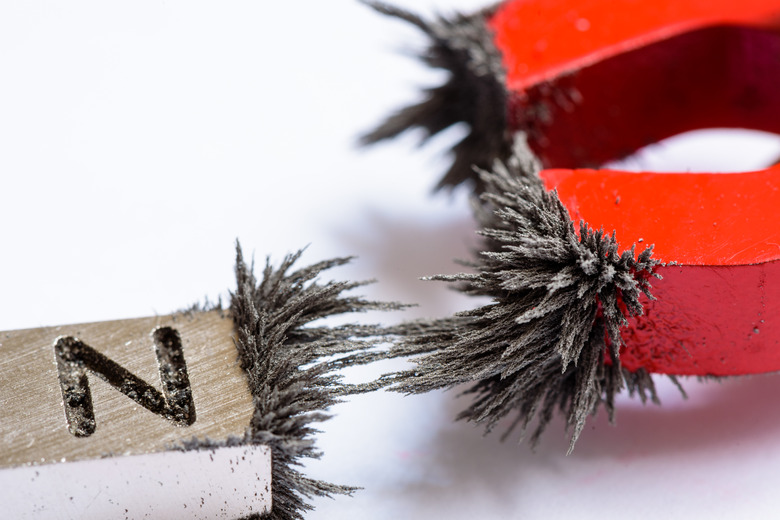How To Create Heat From Magnets
Heat can be created from magnets by putting magnetic material into a high-frequency oscillating magnetic field that makes the magnet's polarity switch back and forth at a high-enough rate to produce noticeable friction. Such technology has been in the news in regard to killing cancer cells by inserting magnetic bits into the tumor. This idea is not new, but what is new is the use of magnetic nanoparticles that seek out and attach to cancer cells selectively. The principle can be demonstrated on your own by creating an oscillating magnetic field with a standard AC plug.
Step 1
Unplug an old lamp that you don't need anymore and cut the wire two feet from the plug. Alternately, purchase a lamp plug/chord replacement at an electronics store such as Radio Shack.
Step 2
Slice the two wires of the chord all the way down to a few inches from the plug. No special tools are needed—just scissors or a knife. Make sure not to cut into the plastic coating exposing any of the bare wire.
Step 3
Wrap one of the two wires around a large iron or steel bolt many times—40+ times if possible. Overlapping is OK, but not more than three or four layers. The material choice is important because many other materials won't reverse magnetic polarity in an alternating magnetic field.
Step 4
Strip an inch of coating off the ends of the two wires (no special tools—scissors or a knife is OK), then splice the bare ends together. Wrap electrical tape around the bare wiring, for safety.
Step 5
Insert the plug into an AC wall socket. The alternating current will cause the polarities of the microscopic magnets in the bolt to reverse direction back and forth because of the alternating magnetic field created by the coil. Touch the iron bolt to feel it heating up.
Step 6
Pull the plug out of the wall socket as soon as you smell something burning. There might not be enough resistance from the coil to prevent a high current that overloads the home's electrical wiring, although there should be.
Things Needed
- Lamp chord
- Iron or steel bolt
References
- Halliday & Resnick; "Fundamentals of Physics"; 1989
Cite This Article
MLA
Dohrman, Paul. "How To Create Heat From Magnets" sciencing.com, https://www.sciencing.com/create-heat-magnets-5668428/. 20 November 2009.
APA
Dohrman, Paul. (2009, November 20). How To Create Heat From Magnets. sciencing.com. Retrieved from https://www.sciencing.com/create-heat-magnets-5668428/
Chicago
Dohrman, Paul. How To Create Heat From Magnets last modified March 24, 2022. https://www.sciencing.com/create-heat-magnets-5668428/
